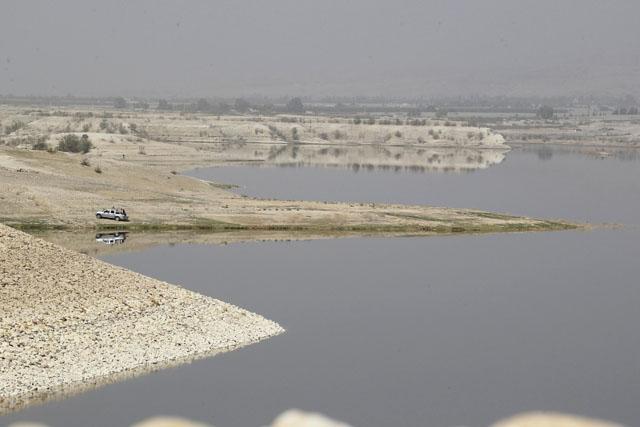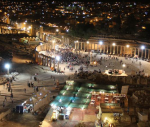You are here
Load on power grid rises by 15% as temperatures plunge
By Hana Namrouqa - Nov 26,2014 - Last updated at Nov 26,2014

AMMAN — The load on the country’s power grid increased by 15 per cent on Wednesday as temperatures plunged seven degrees below their annual average, according to officials.
National Electric Power Company (NEPCO) operations department director Amin Zaghel said the electricity load reached 2,700 megawatts during the day and is expected to increase by 10 per cent at nightfall.
“The electricity load on Wednesday night will increase to 2,900 megawatts,” Zaghel told The Jordan Times.
He noted that the average load on the country’s power grid during winter ranges between 2,400-2,700 megawatts, but surges during cold spells.
A depression that started affecting the country on Tuesday night brought heavy rain and caused temperatures to drop well below their annual average of 18°C during this time of the year, according to the Jordan Meteorological Department (JMD).
The JMD said the depression, centred to the north of Cyprus, will continue affecting the country on Thursday, when the weather will be cold and cloudy, with showers in the north and central regions.
“By Thursday night, the southern region will start receiving rain, while chances of rainfall in the north of the Kingdom will drop,” JMD meteorologist Husam Abu Shayeb told The Jordan Times.
Temperatures on Thursday will range between a high of 9°C and a low of 4°C in the capital, while winds will be westerly moderate to brisk, turning to northwesterly moderate at night, according to the JMD.
The impact of the depression is forecast to ease off on Friday, when the weather will be relatively cold and partly cloudy.
Temperatures in Amman will reach a maximum of 11°C during the day, dropping to a minimum of 3°C at night, the JMD said,
A slight increase in mercury levels is expected on Saturday, with temperatures in Amman ranging between 12°C and 3°C.
The JMD issued warnings of possible frost formation on Friday and Saturday nights in the badia and mountainous areas, where night-time temperatures will be slightly above zero.
Meanwhile, figures released by the Ministry of Water and Irrigation indicated that since the start of the wet season in mid-October and up until Wednesday morning, the country received 18.5 per cent of its long-term annual average of 8 billion cubic metres of rainwater.
According to a ministry statement e-mailed to The Jordan Times, Irbid Governorate received the highest amount of rain during the current wet season, followed by Jerash and Balqa governorates respectively.
The country’s 10 major dams currently hold 120 million cubic metres (mcm) of water, which constitutes 37 per cent of their total capacity of 325mcm, the statement said.
A total of 6.8mcm entered the dams since the start of the wet season, according to the ministry, which indicated that runoff takes 24 to 48 hours before it is channelled into the dams.
Related Articles
AMMAN — The country on Thursday will be affected by the season’s first depression, expected to bring heavy rain and a tangible drop in tempe
Rainfall over the past two days dispelled fears of a looming drought this year, with some five million cubic metres (mcm) of water entering the dams between late Tuesday and early Wednesday, according to officials.
The Kingdom will be affected by a depression on Tuesday night that is forecast to bring heavy rain and thunderstorms as well as snow to mountainous areas, the Jordan Meteorologist Department (JMD) said on Monday.




















